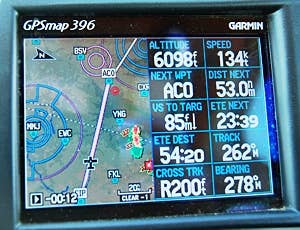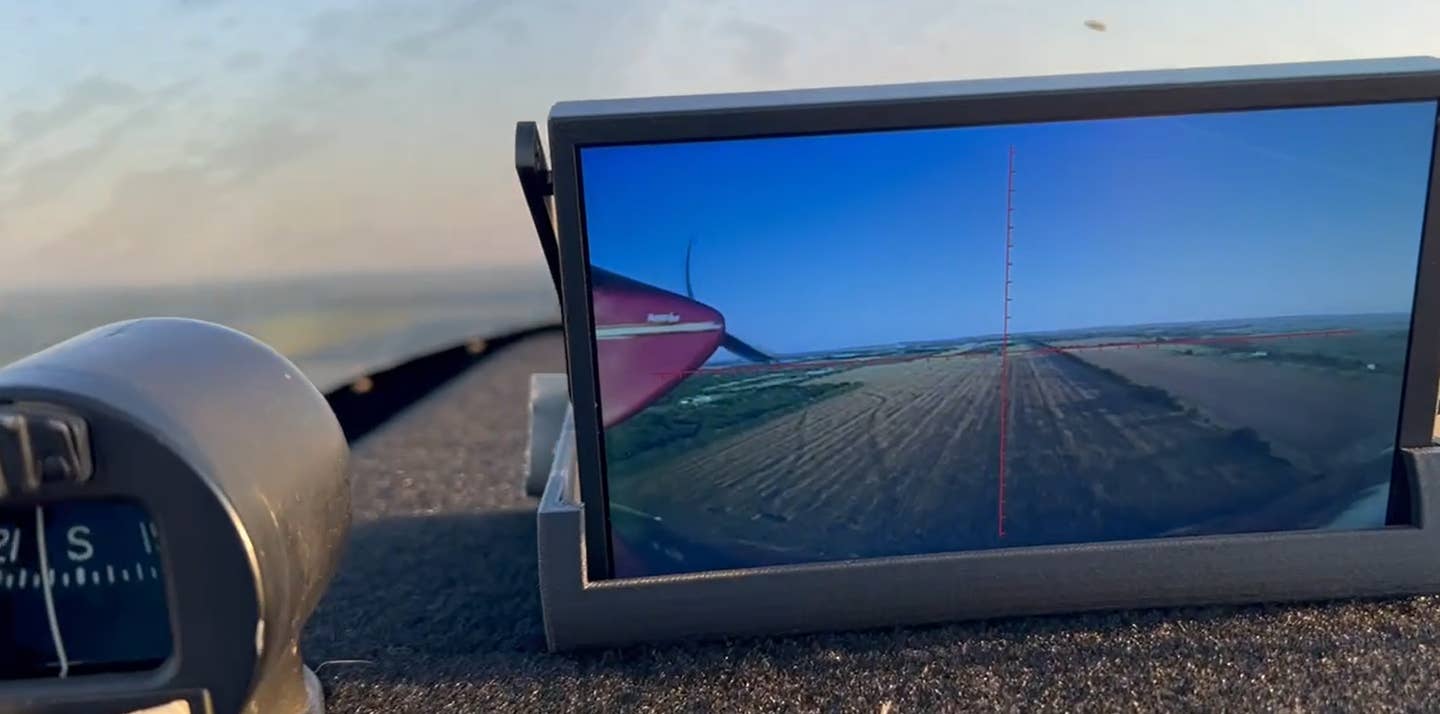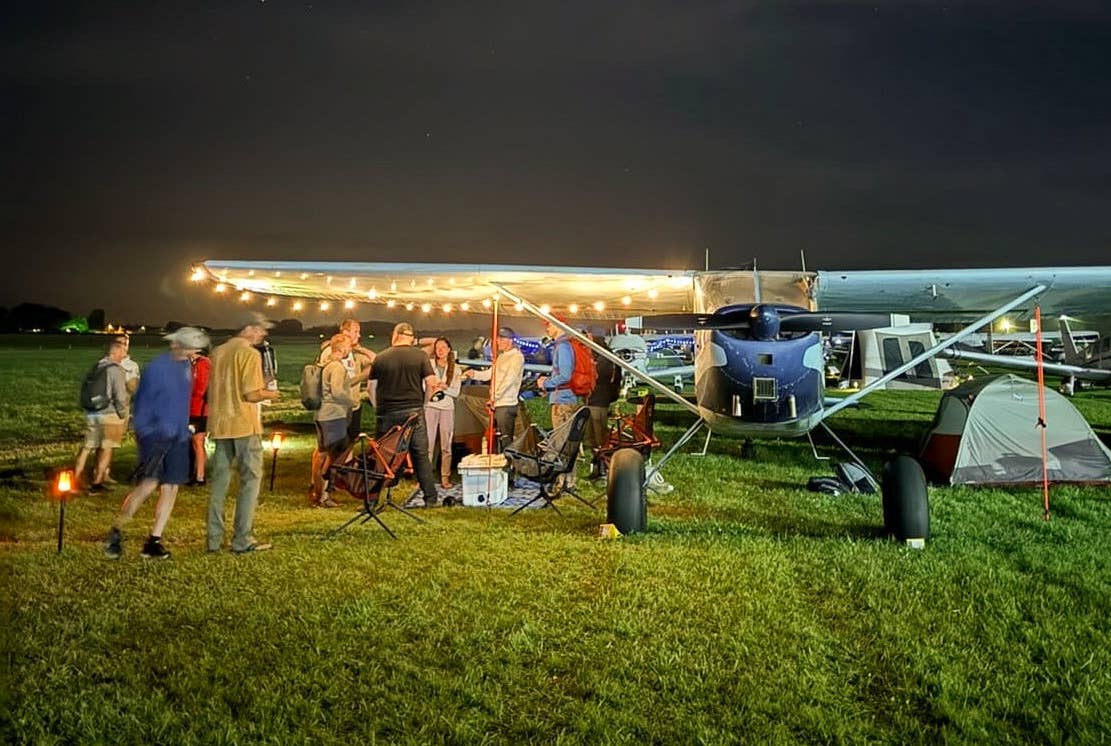
Nexrad radar depicted a nasty cell along the route of flight, resulting in a detour through Akron (ACO). Mark Phelps
Even though I fly a Technologically Challenged Airplane, I do have a Garmin 396 with datalinked XM Weather. My trip to Oshkosh last Friday would not have worked without it.
I filed IFR from home base, Somerset Airport in New Jersey, to my fuel stop at Sandusky, Ohio. With the headwinds forecast by fltplan.com, I was confident I'd have sufficient groundspeed to get there with healthy reserves. In the last issue of Flying, Editor in Chief Mac McClellan wrote how accurate his flight plans are when filed through that free service. This was my first experience with it, and I liked what I saw.
I also called 1-800-wxbrief. The Lockheed Martin briefers seemed a bit concerned about some possible convective activity near the northern coast of Ohio, but looking at adds.aviationweather.noaa.gov, I thought it looked small and far from my route. I was more concerned with what I saw out in Wisconsin. There was a huge splotch of ugly red to the west northwest of Oshkosh. I thought the bad stuff must be headed that way for sure, and I doubted I'd get there in time. The government-certified forecasts all called for blue skies, but I was skeptical, figuring I could overnight along the way and make the last leg after the front had passed.
Turns out, their forecasts were right on both counts, and mine were wrong.
| ** Nexrad radar depicted a nasty cell along the route of flight, resulting in a detour through Akron (ACO).** |
On the airway to Youngstown, Ohio, I was in and out of clouds. Two small but nasty patches of red, comingled with lightning symbols appeared on the 396's screen, on the march for the same VOR I was approaching. I asked the controller if I could dogleg left to the Akron VOR on my way into Sandusky, giving myself a 20-mile buffer around the weather. He blessed the plan (see illustration). After a brief pause, I heard another pilot ask, "Youngstown; have you got weather?" "Uh, yes. I'm depicting something here."
Over the next 15 minutes or so, I listened as a few more pilots got to overfly Akron unexpectedly. It made me wonder what would have happened to my flight if I didn't have the service available -- and what might have happened to that other pilot who apparently didn't.
The Lockheed Martin briefer I called from Sandusky reiterated the optimistic company line about flying on up to Oshkosh along the Chicago coastline, with a short stop in Waukesha for fuel. (You can't have too much gas when approaching the AirVenture beehive.) True enough, Nexrad showed all the nasty stuff sliding slowly southbound, but staying to the west, leaving a sun-dappled pathway to the Promised Land. Score two for the computers.
At one point, back before passing Chicago, the XM Weather signal dropped off line for some reason. For about 10 minutes (it seemed a lot longer), I anxiously waited for the reassuring radar images to return to duty. If they hadn't, there was no way I would have tempted fate beyond what I could see clearly through the windshield, which, this time, would have been enough as I was in good VMC for the rest of the trip. Still, when the lights came back on, I felt a distinct return of confidence in my plan to keep going, trusting the forecast.
Flying Contributing Editor Tom Benenson flew out with master instructor Doug Stewart from Columbia County Airport near Albany, New York. They had a similar experience over Lake Michigan, though they were flying in solid IMC at the time. All the more reason to thank XM Weather for our enhanced situational awareness when it comes to severe weather.
My trip was one that I would probably not have launched in the first place without XM Weather. Most of my route was flown in clear air, but there was enough actual cloud flying that I would have been nervous about blundering into a popup thunderstorm. As it was, I trusted my situational awareness and felt comfortable in my decision to go, and to keep going once I got started.
Call to action: If you have any tips of your own you'd like to share, or have any questions about flying technique you'd like answered, send me a note at enewsletter@flyingmagazine.com. We'd love to hear from you.

Sign-up for newsletters & special offers!
Get the latest FLYING stories & special offers delivered directly to your inbox






